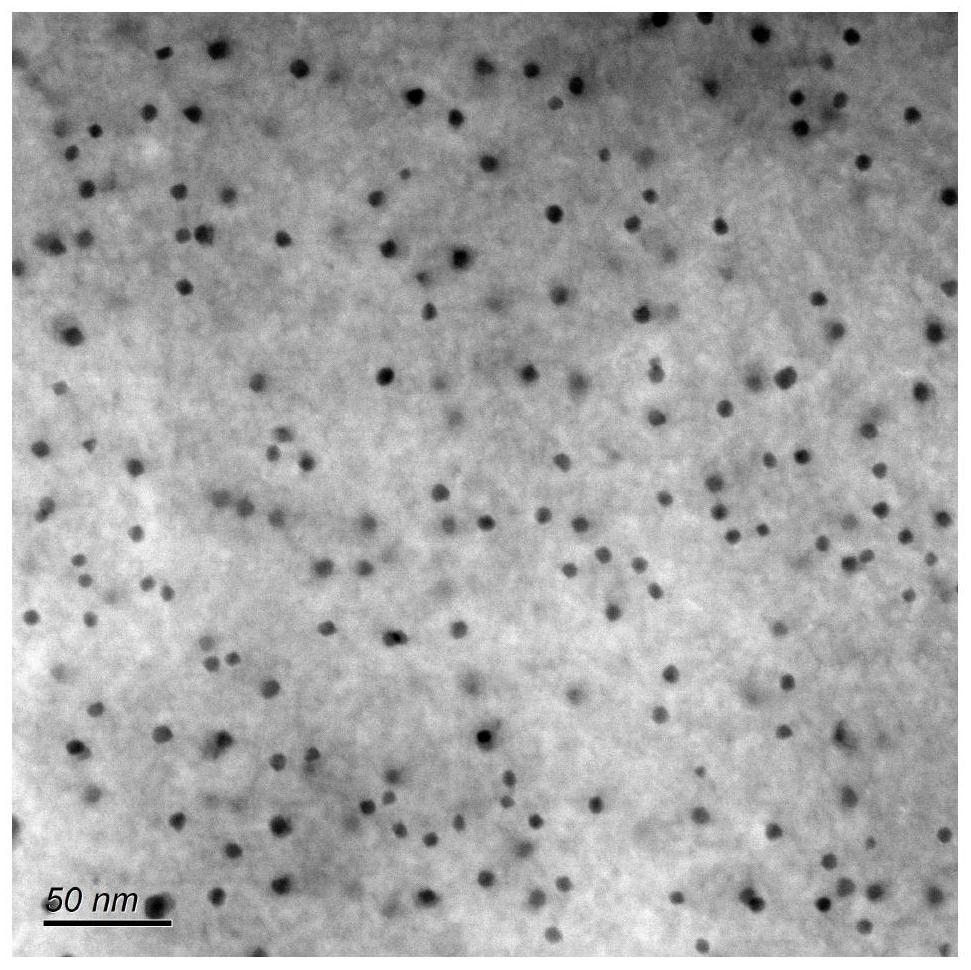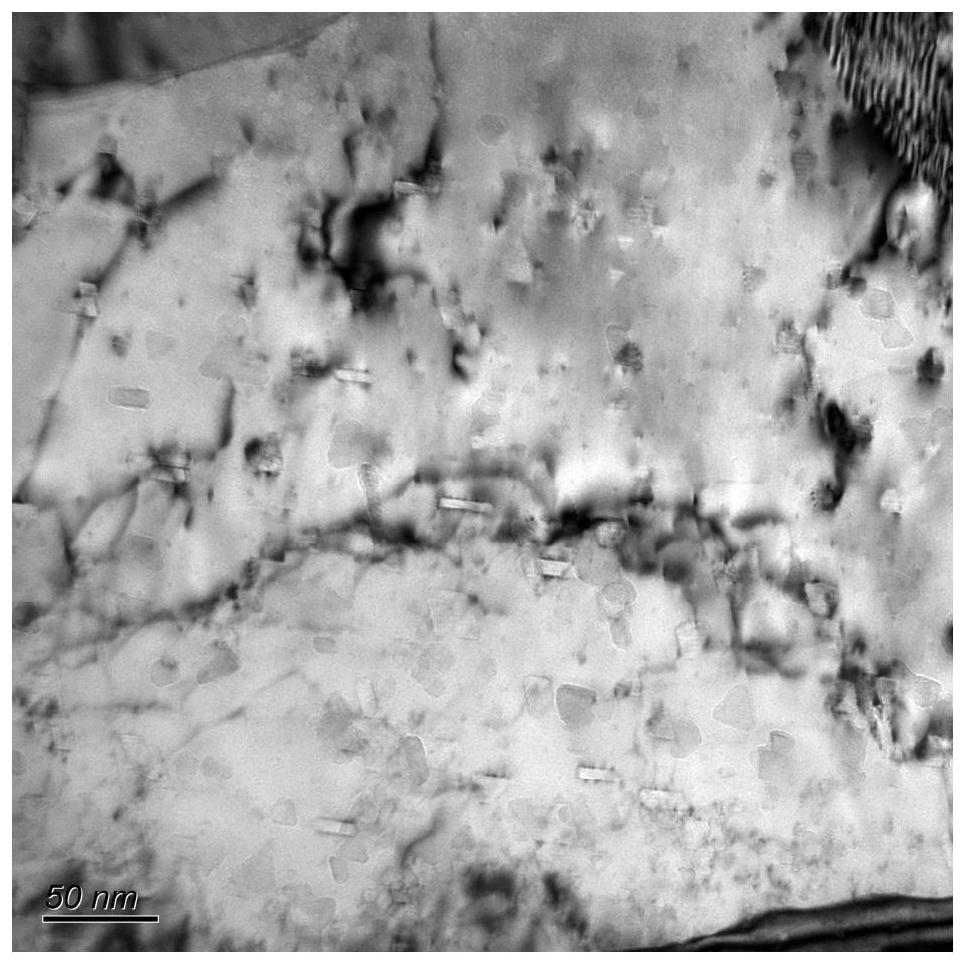A preparation method of nano-oxide dispersion strengthened copper alloy for fusion reactor
A dispersion-strengthened copper and nano-oxide technology, applied in fusion reactors, thermonuclear fusion reactors, metal processing equipment, etc., can solve problems such as poor creep performance, uneven spatial distribution, and easy segregation, and achieve high temperature strength and Improvement of creep resistance, inhibition of oxide growth and agglomeration, and improvement of neutron radiation resistance
- Summary
- Abstract
- Description
- Claims
- Application Information
AI Technical Summary
Problems solved by technology
Method used
Image
Examples
Embodiment 1
[0037] This embodiment provides a method for preparing a nano-oxide dispersion-strengthened copper alloy for a fusion reactor, comprising the following steps:
[0038] Step (1), using electrolytic copper, pure aluminum, and copper-titanium intermediate alloy as raw materials, adopting vacuum air atomization powder making equipment to smelt and atomize powder with argon gas to obtain alloy powder; before pulverizing, vacuum the equipment to 100Pa Next, inject high-purity argon gas, and use magnesia crucible for smelting. After smelting, ensure that the mass percentage of aluminum in the alloy is 0.18%, and the mass ratio of titanium to aluminum is 1:2;
[0039] Step (2), sieving the obtained powder to obtain an alloy powder with a particle size less than 325 meshes;
[0040] In step (3), cuprous oxide, nano-alumina, and nano-titanium oxide are mixed in proportion (the proportions of the three elements of copper, aluminum, and titanium are the same as those in step (1)), and mec...
Embodiment 2
[0050] This embodiment provides a method for preparing a nano-oxide dispersion-strengthened copper alloy for a fusion reactor, comprising the following steps:
[0051] Step (1), using electrolytic copper, pure aluminum, and pure titanium as raw materials, adopt vacuum air atomization pulverizing equipment to smelt and use argon gas atomization to pulverize to obtain alloy powder; before pulverizing, vacuum the equipment to below 100Pa, Then high-purity argon gas is injected, and alumina crucible is used for smelting. After smelting, ensure that the mass percentage of aluminum in the alloy is 0.35%, and the mass ratio of titanium to aluminum is 1:1;
[0052] Step (2), sieving the obtained powder to obtain an alloy powder with a particle size less than 325 meshes;
[0053]In step (3), cuprous oxide, nano-alumina, and nano-titanium oxide are mixed in proportion (the proportions of the three elements of copper, aluminum, and titanium are consistent with those in step (1)), and mec...
Embodiment 3
[0064] This embodiment provides a method for preparing a nano-oxide dispersion-strengthened copper alloy for a fusion reactor, comprising the following steps:
[0065] Step (1), using electrolytic copper, pure aluminum, and copper-titanium intermediate alloy as raw materials, adopting vacuum air atomization powder making equipment to smelt and atomize powder with argon gas to obtain alloy powder; before pulverizing, vacuum the equipment to 100Pa Next, inject high-purity argon gas, and use magnesia crucible for smelting. After smelting, ensure that the mass percentage of aluminum in the alloy is 0.1%, and the mass ratio of titanium to aluminum is 1:1.5;
[0066] Step (2), sieving the obtained powder to obtain an alloy powder with a particle size less than 325 meshes;
[0067] In step (3), cuprous oxide, nano-alumina, and nano-titanium oxide are mixed in proportion (the proportions of the three elements of copper, aluminum, and titanium are the same as those in step (1)), and me...
PUM
| Property | Measurement | Unit |
|---|---|---|
| particle size | aaaaa | aaaaa |
Abstract
Description
Claims
Application Information
 Login to View More
Login to View More - R&D
- Intellectual Property
- Life Sciences
- Materials
- Tech Scout
- Unparalleled Data Quality
- Higher Quality Content
- 60% Fewer Hallucinations
Browse by: Latest US Patents, China's latest patents, Technical Efficacy Thesaurus, Application Domain, Technology Topic, Popular Technical Reports.
© 2025 PatSnap. All rights reserved.Legal|Privacy policy|Modern Slavery Act Transparency Statement|Sitemap|About US| Contact US: help@patsnap.com



